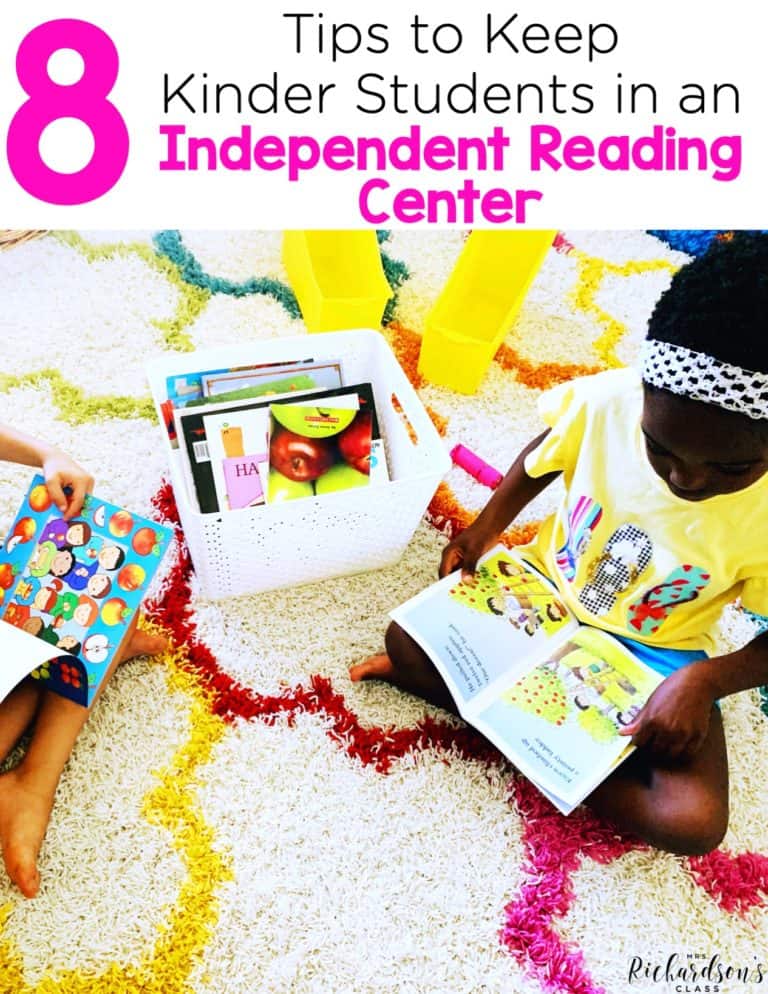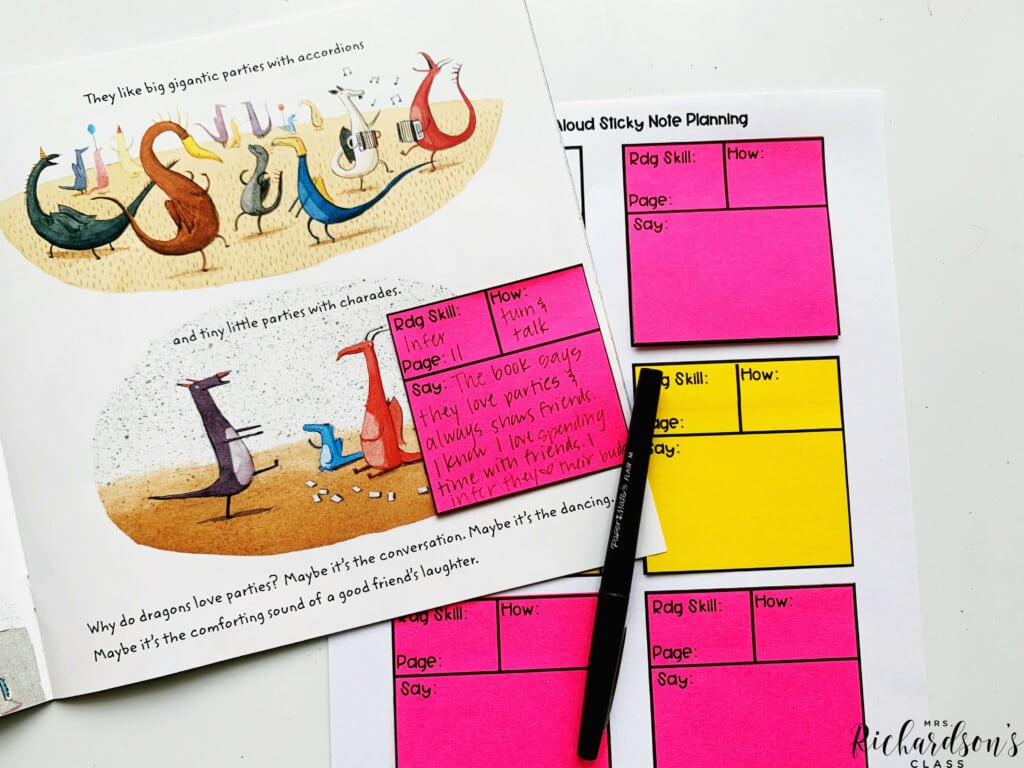


When you hear the words “interactive read aloud”, what comes to mind? Many teachers think it’s just a great read aloud that students enjoy and have conversations about. While this is correct, there is so much more to an interactive read aloud! This powerful time of day allows us to not only connect with students but provides an opportunity to teach and model important reading strategies and skills. Let’s dive into exactly what interactive read alouds are and how to use them in the primary classroom.
Fountas and Pinnell define the interactive read aloud with the following statement: “Interactive read-aloud is a whole-group instructional context in which you read aloud a selected text to the whole class, occasionally and selectively pausing for conversation.”
This whole-group time of day consists of the teacher reading a mentor text aloud while the students listen and view the illustrations. The mentor text should be on the students listening level, not their reading instructional level. You will stop at certain points throughout the book that lend to a teaching point. You may also have students turn and share with a partner (think, pair, share) to foster meaningful conversations and discussions about the text.
First, this important time of day allows us to connect with our students and grow a classroom community that feels like a little family. Through conversations and sharing, we all learn a lot about each other, which allows us all to better relate and understand each other.
The interactive read aloud time also allows us to expose students to rich, engaging texts that they may not be able to read on their own, but they will still be age-appropriate. No matter what a student’s reading level, decoding ability, or reading skillset is, they will all be able to enjoy and learn during this time because it’s on their listening level. Books on their listening levels also allow for rich vocabulary opportunities for you to think aloud about and share with students! Through your interactive read aloud time, students will also be exposed to a variety of genres that they may not have chosen to read on their own.
As the teacher, you also get to model so many things as a reader like:
Additionally, you’re helping students build a solid foundation in reading skills like growing and using schema and book knowledge.
One of the most important things to keep in mind is that planning your read aloud lesson is as important as delivering the lesson. We want to purposefully create lessons that are engaging and effective. There are three basic steps to planning a lesson:

I went into tons of details on how to plan an effective lesson on my blog HERE. It also has a FREE sticky note template you can print out to make the sticky note writing super easy. Then, if you leave the notes in the book, you’ll be set for next year.
You’ll start with all of your students surrounding you, usually on your whole group rug. If students don’t already have a carpet (or rug) partner that they share with, you can pair them up so they’re ready to chat when it’s time.
There are several parts to an interactive read aloud lesson:
You can also choose to revisit the mentor text later to help students notice new things or reinforce teaching points. You can also have students respond to the text in writing.
Interactive read aloud time brings books to life! My students were always focused on the text and took away so many important things from our lesson together. If you want some help getting this piece of literacy instruction up and running, check out my Interactive Read Aloud Lessons and Activities Bundle.
This bundle has everything you’ll need to implement interactive read aloud lessons including:
Check it out today to bring the interactive read aloud time to life for your students!

Want to use the latest research to boost your readers during small groups? This FREE guide is packed with engaging ideas to help them grow!

I’m a K-1 teacher who is passionate about making lessons your students love and that are easy to implement for teachers. Helping teachers like you navigate their way through their literacy block brings me great joy. I am a lifelong learner who loves staying on top of current literacy learning and practices. Here, you’ll find the tools you need to move your K-2 students forward!


| Cookie | Duration | Description |
|---|---|---|
| cookielawinfo-checkbox-analytics | 11 months | This cookie is set by GDPR Cookie Consent plugin. The cookie is used to store the user consent for the cookies in the category "Analytics". |
| cookielawinfo-checkbox-functional | 11 months | The cookie is set by GDPR cookie consent to record the user consent for the cookies in the category "Functional". |
| cookielawinfo-checkbox-necessary | 11 months | This cookie is set by GDPR Cookie Consent plugin. The cookies is used to store the user consent for the cookies in the category "Necessary". |
| cookielawinfo-checkbox-others | 11 months | This cookie is set by GDPR Cookie Consent plugin. The cookie is used to store the user consent for the cookies in the category "Other. |
| cookielawinfo-checkbox-performance | 11 months | This cookie is set by GDPR Cookie Consent plugin. The cookie is used to store the user consent for the cookies in the category "Performance". |
| viewed_cookie_policy | 11 months | The cookie is set by the GDPR Cookie Consent plugin and is used to store whether or not user has consented to the use of cookies. It does not store any personal data. |



2 Responses
I purchased the $97 webinar and materials bundle, however I do not have the link to access the materials or webinars. Can you help ? I would like to get started!
Hi Patricia, I just sent you your login information to the email you registered with. If you need more help, just email us at [email protected] and we’ll get right back to you! -Mrs. Richardson’s Class Team